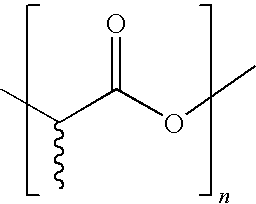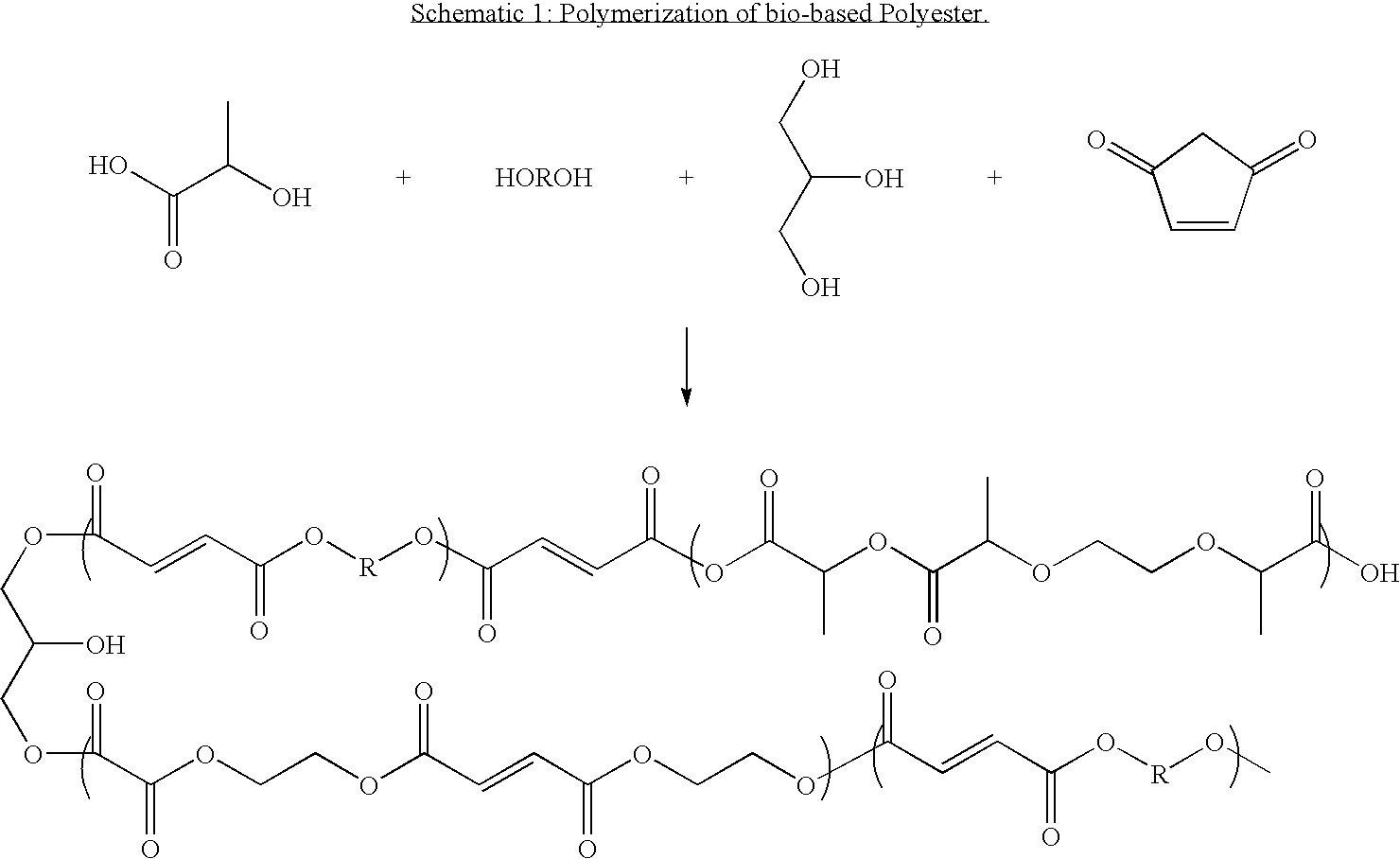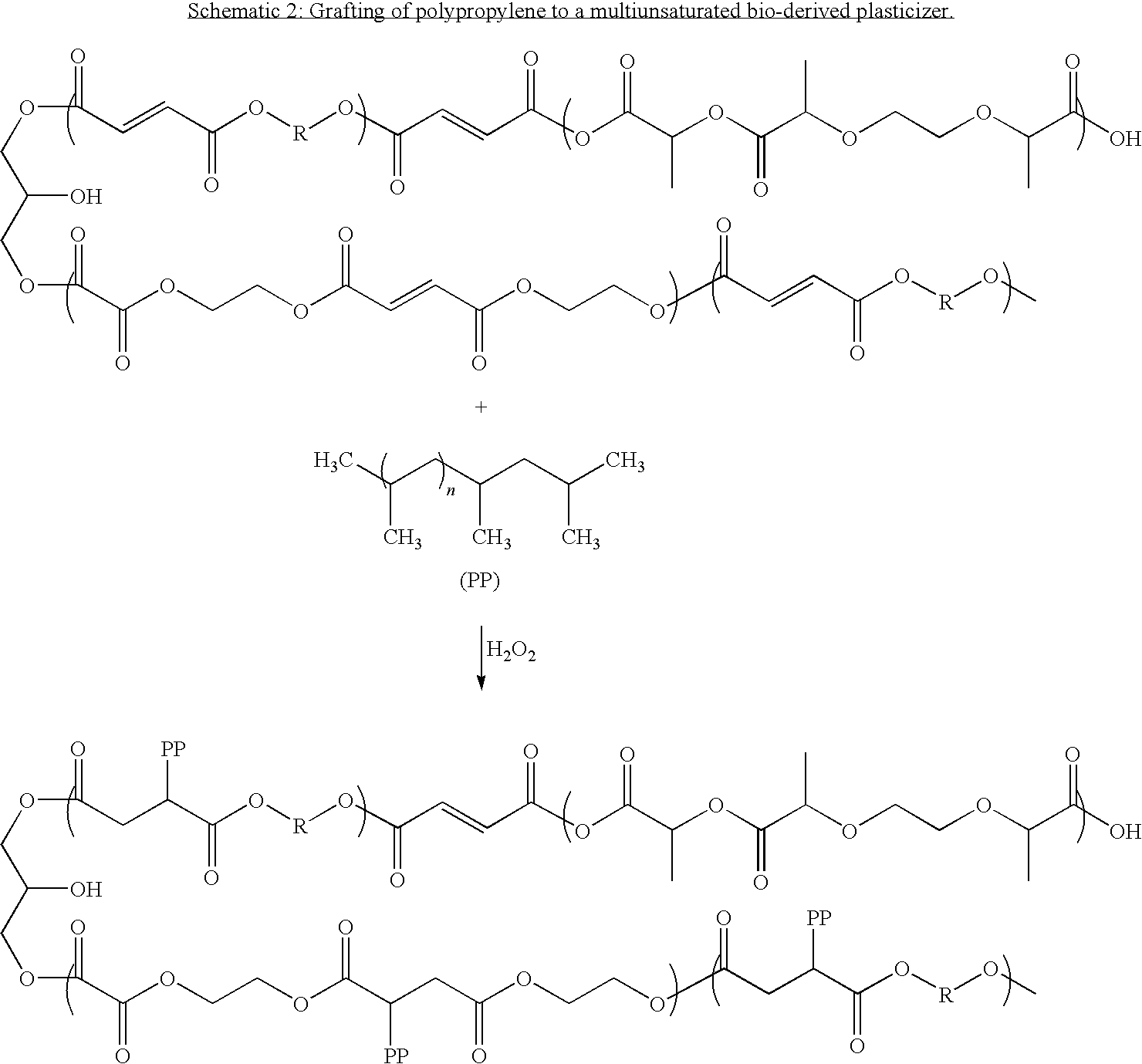Bioderived plasticizer for biopolymers
a biopolymer and plasticizer technology, applied in the field of bioderived plasticizers, can solve the problems of affecting the modulus of biopolymers, limiting the use of base resin manufacturers to large manufacturers, and high rigidity of polylactic acid, so as to improve the flexibility of biopolymers and not adversely affect their modulus
- Summary
- Abstract
- Description
- Claims
- Application Information
AI Technical Summary
Benefits of technology
Problems solved by technology
Method used
Image
Examples
example 1
Sample No. AF011508
[0061]19 g glycerin, 70 g diethylene glycol were charged into a 3 neck round bottom flask with a condenser. 91 g maleic anhydride were then added and the vessel put into a 80° C. oil bath. These reagents were allowed to react for 20-30 minutes until an exotherm was observed. The temperature allowed to come back down. At this point, 168 g lactic acid (88% solution in water) and 1.11 g of tin(II) octanoate were added to the reaction mixture. The vessel was heated to 170° C. and allowed to react until the acid number was reduced from 282 to 18. When the Acid number reached 18.9 g of phthalic anhydride were added to the reaction and allowed to react for one hour. The reaction products were then poured out and analyzed.
example 2
Sample No. LT020108
[0062]41.8 g glycerin, 154.0 g diethylene glycol, and 200.0 g succinic anhydride, and 2.69 g stannous octanoate and 0.77 g hydroquinone were charged into a 1000 mL four neck reaction vessel with an overhead stirrer, condenser and collection flask and a nitrogen purge. The reaction was heated to 80° C. under a nitrogen blanket and allowed to exotherm. At the end of the exotherm, 434.82 g of 88% lactic acid were added to the reaction mixture and the temperature increased to 170° C. The reaction was then allowed to react until the acid number dropped below 30. At that time 9.5 g of phthalic anhydride were added to the reaction mixture and allowed to stir under heat for about one hour. The reaction products were then poured out and analyzed.
example 3
Sample No. LT020708
[0063]41.8 g glycerin, 154.0 g diethylene glycol, and 200.0 g maleic anhydride, and 2.69 g stannous octanoate and 0.77 g hydroquinone were charged into a 1000 mL four neck reaction vessel with an overhead stirrer, condenser and collection flask and a nitrogen purge. The reaction was heated to 80° C. under a nitrogen blanket and allowed to exotherm. At the end of the exotherm, 434.82 g of 88% lactic acid were added to the reaction mixture and the temperature increased to 170° C. The reaction was then allowed to react until the acid number dropped below 3. At that time 9.0 g of phthalic anhydride were added to the reaction mixture and allowed to stir under heat for about one hour. The reaction products were then poured out and analyzed.
PUM
| Property | Measurement | Unit |
|---|---|---|
| Temperature | aaaaa | aaaaa |
| Temperature | aaaaa | aaaaa |
| Glass transition temperature | aaaaa | aaaaa |
Abstract
Description
Claims
Application Information
 Login to View More
Login to View More - R&D
- Intellectual Property
- Life Sciences
- Materials
- Tech Scout
- Unparalleled Data Quality
- Higher Quality Content
- 60% Fewer Hallucinations
Browse by: Latest US Patents, China's latest patents, Technical Efficacy Thesaurus, Application Domain, Technology Topic, Popular Technical Reports.
© 2025 PatSnap. All rights reserved.Legal|Privacy policy|Modern Slavery Act Transparency Statement|Sitemap|About US| Contact US: help@patsnap.com



